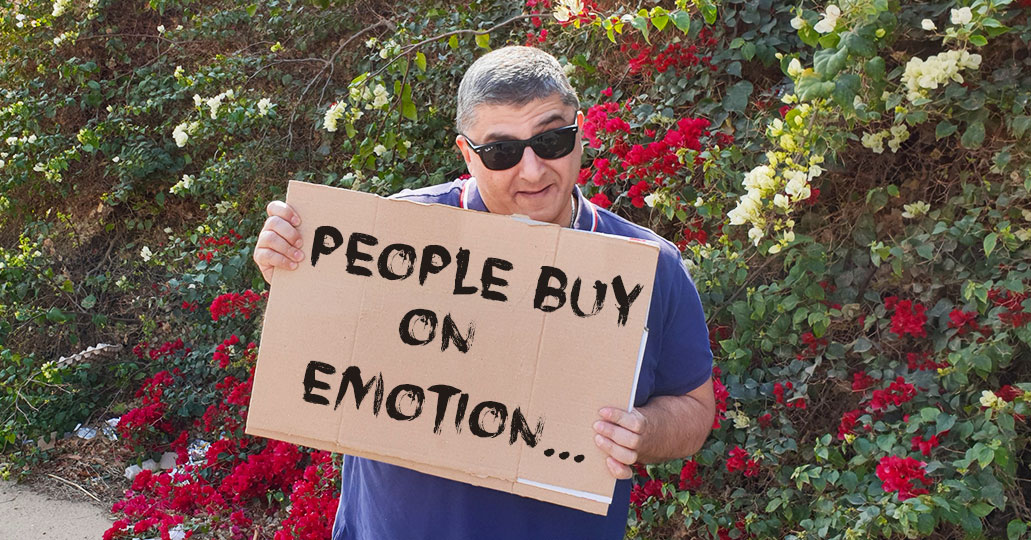
When they start with, “So tell me a bit about your service?” don’t fall for that trap!
The truth is quite often business owners, consultants and sales people alike fall for the same trap when asked different versions of the same question, like: “How does it work?” or “What’s involved and how are you able to help me?” or “What makes you different, can you tell me a bit about what you offer?”.
It’s so easy to jump right into replying to a prospective client about our stuff…
Problem is, these types of questions come with risk. Yes, the natural reaction might be to jump at the opportunity and show and tell, like a rabid dog cooped up all day.
But does this line of engagement serve you or your prospects?
It’s only too easy to start talking about ALL the features, the benefits, advantages, services, delivery, the next steps and some peeps even go as far as talking price. You know, all that stuff. The biggest problem is that it’s Too Much Information (TMI), Too Early.
To inspire people to make decisions and take action quickly, the thing you should really know is that it’s not about providing them with a stack of information, expecting them to really give a damn deep down inside.
You may have heard this expression used… “People buy on EMOTION…”
According to neuroscience this is apparently more than an expression. In my case, I’ve spent two decades building multi-million dollar businesses across different industries from scratch. And, I’ve helped 6, 7, 8 even 10 figure entities because I discovered the power of “Evoking the Right Emotions” in people for decision making and taking positive action quickly. But, when it came to my personal life, especially in the area of relationships with the opposite sex, I failed to do what mattered most. In fact, I pretty much did the opposite of “Evoking the Right Emotions”.
All the warning signs were there and I naively ignored them all – I really didn’t know any better. I was focused on these cool and lucrative businesses I’d built. After all they’d provided the palatial home in that exclusive part of Sydney, and the prestigious cars, the extravagant holidays, and the coolest things that money could buy. I was really misguided. And, I was trapped into thinking this was the answer to happiness.
I should be happy right?
Wrong.
With the benefit of hindsight, the big takeaway for me is; one, money doesn’t solve any underlying issues in providing a truly healthy relationship. Two, spend time with family, not just limited to the quality time we often hear about. And of course, be there emotionally for them, not just physically.
Did you finish the last part of that expression I mentioned above?
“People buy on EMOTION… and justify it with LOGIC”
Let’s consider this ‘logic’ part for a moment. If you start your conversations by answering a prospective client’s “want to know more” type questions, by sharing ALL that information (facts, reason and logic) early on, this approach can work against their interests and yours.
Here’s why.
First, most of us shift to evaluating everything we’re hearing in a logical state of mind. For example, your prospect may think about different alternatives available to them even though that prospect is most likely unqualified in your area of specialisation. The thing is, at that point you’re actually feeding their curiosity. And, you’re not doing them or yourself any service by giving them more stuff to assess.
Second, this type of information merely carries your personal case forward. And, it doesn’t make much of a difference in the world of helping people improve their situation or in sales.
Rather as the professional in your field, you should stir the emotion inside them that craves for an action to satisfy and soothe their situation.
People need to buy from a state of feeling empowered to take action.
We want them to truly feel what the best decision is for them. We want to create a scenario where they see, want and do more towards the outcome they want in a powerful way. The same way ones thirst cannot be quenched until you drink.
In the world of sales what makes the biggest difference in decision making is what people spend their time thinking about (the thirst) and what it’s associated with (the need for a refreshing drink). Science shows most buying decisions people make are emotional.
If your prospective clients’ are spending time thinking about their challenges, then arousing these emotions first will more than likely make a difference in how they act. So it’s pretty important to address the Emotional State of their situation first in your communication.
Look at the US presidential elections in 2016. Love it or hate it, the winner focused on how voters felt. With much criticism, he placed less focus on facts and policy. That’s pretty much been his approach straight out of the gate in the race to be president.
So resist talking about all that logical information, too early
Focus on the challenges your prospective clients’ are facing, and their vision for a better outcome to their situation. Allow them to stop bullsh&tting themselves so they can experience the difference between where they are now, and where they want to be. Then clarify, in as simple language as possible, how buying whatever it is you provide will satisfy the emotional craving you’ve evoked.
All told, there are a number of other steps besides focusing on emotions that consultants can take to make their prospective clients more engaged with the case they intend to present. These steps can take many forms and labels like, building rapport, or trust, or affinity etc. I consistently do this in the first part of my presentations, and I refer to them as The Opening – because it opens up people’s minds in three ways.
— First, it engages people simply by disrupting their thinking.
— Second, it takes their interest in solving a problem and turns it into essential commitments.
— Third, it provides a starting point to bond with emotion, clearing the way for us to address “Predictable Buyer Resistance”.
I can’t tell you too much more here, because like I said, that would be a disservice to you 😉
I can however show you how I use this approach so you can do the same…
Join me for this LIMITED FREE online workshop I’m running for you. Register NOW and I’ll see you on the inside. (Here’s the link)
Until next time, here’s to blue skies ahead 🙂
Wes




